Discovering a cracked bicycle frame raises concerns about repair expenses. The cost to weld a cracked bicycle frame varies based on factors like the material, extent of damage, and the expertise of the welder.
We will delve into the key considerations that influence the overall expenses, helping you make informed decisions.
How Much Does It Cost to Weld a Cracked Frame?
The price of welding a cracked frame fluctuates depending on numerous factors, and a precise estimate hinges on project specifics. However, as a rough estimate, you can expect the cost to range between $50 to $100 for welding a cracked frame.
Keep in mind that individual circumstances may alter this figure, so it’s best to consult a professional for an accurate quote.
What Are the Different Types of Bike Frames?
When it comes to bicycles, the frame serves as the backbone, determining the bike’s performance, durability, and riding characteristics. Over the years, manufacturers have developed various types of bike frames, each designed to excel in specific riding conditions and cater to different preferences.
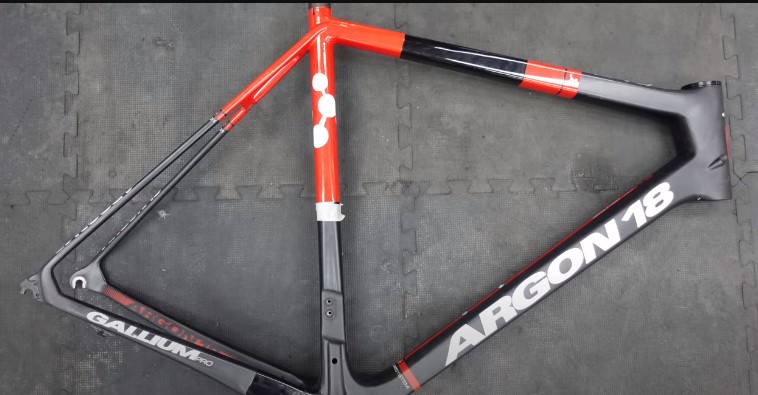
Below are the most common types of bike frames, outlining their unique features and ideal applications.
Steel Frame
Known for its durability and strength, steel frames have been a popular choice for decades. These frames offer a smooth and comfortable ride, dampening vibrations and providing stability on various terrains.
While they might be heavier compared to modern materials like carbon fiber or aluminum, steel frames excel in absorbing road shocks and offering a resilient, long-lasting build.
Additionally, steel’s malleability allows for intricate designs, making it a favorite for custom bike builders. Cyclists who appreciate the traditional feel and aesthetics of a steel frame often opt for it, as it provides a sense of nostalgia and a connection to cycling’s heritage.
Alloy Frame
The alloy frame represents a popular choice among modern bike frames, offering a blend of strength, lightness, and affordability. These frames are constructed using a mix of metals, such as aluminum alloys, which provide excellent strength-to-weight ratios.
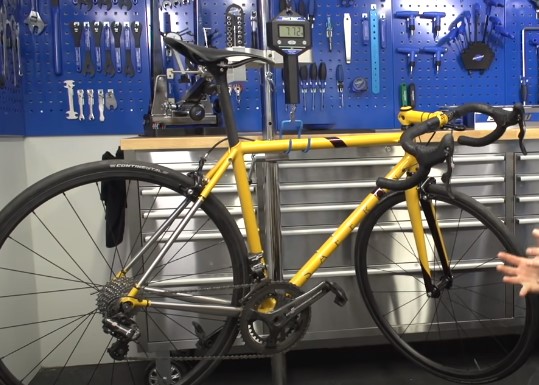
Alloy frames are favored for their responsiveness and nimbleness, making them suitable for a wide range of riding styles, from road cycling to mountain biking. The material’s corrosion resistance ensures the frame’s longevity, while its ability to be formed into various shapes allows for innovative frame designs.
Cyclists who seek a balance between performance and budget often opt for alloy frames, as they deliver a satisfying riding experience without the higher cost associated with other materials like carbon fiber.
Carbon Frame
The carbon frame stands at the forefront of modern bike frame technology, revered for its unmatched combination of strength, lightness, and stiffness. Crafted from carbon fiber-reinforced composites, these frames offer exceptional performance for enthusiasts and professional cyclists alike.
Carbon frames excel in absorbing vibrations, delivering a smooth and comfortable ride on long journeys. They boast outstanding power transfer, making them ideal for racers and those seeking maximum speed.
Additionally, carbon frames can be intricately molded, allowing for aerodynamic shapes and innovative designs. While carbon frames showcase cutting-edge engineering, they can be relatively expensive compared to other materials.
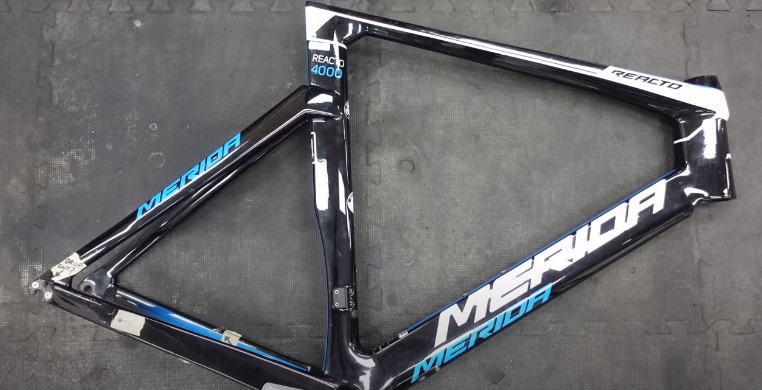
However, cyclists willing to invest in the ultimate riding experience often choose carbon frames for their unparalleled performance and advanced capabilities.
Titanium Frame
The titanium frame is a niche choice among bike frames, celebrated for its unique blend of strength, lightness, and durability. Constructed from a high-strength alloy of titanium, these frames exhibit remarkable corrosion resistance, ensuring longevity even under harsh conditions.
Titanium frames offer a smooth and comfortable ride, efficiently absorbing road vibrations to enhance comfort during long rides. They are known for their longevity, as titanium is highly resistant to fatigue and stress, making these frames a lifetime investment for dedicated cyclists.
While titanium frames are more expensive than steel or aluminum, they are favored by riders seeking a distinctive and high-performance ride. Cyclists who prioritize ride quality, durability, and an exclusive frame material often find the titanium frame to be the perfect choice for their cycling adventures.

Cost-Related Factors in Welding a Cracked Frame
Discovering a cracked bike frame raises concerns about repair costs and the feasibility of fixing the issue. Welding is a common method to mend a cracked bike frame, but the expenses involved can vary significantly.
Several factors influence the overall cost of welding, ranging from the extent of damage to the materials involved. Below are the key cost-related factors to consider when welding a cracked bike frame.
Extent of Damage
The severity and size of the crack play a significant role in determining the welding cost. Minor cracks or fractures that are relatively small and straightforward to repair typically incur lower expenses.
On the other hand, extensive damage or multiple cracks may require more time, effort, and expertise, leading to higher welding costs. A thorough assessment by a professional welder is crucial to accurately gauge the extent of damage and estimate the repair expenses.
Material of the Frame
The material from which the bike frame is constructed directly impacts the welding cost. Common bike frame materials include steel, aluminum, carbon fiber, and titanium.

Each material poses unique challenges and requires specific welding techniques. Steel frames are generally easier and more cost-effective to weld due to their malleability and compatibility with common welding methods.
On the contrary, welding aluminum, carbon fiber, or titanium frames demands specialized skills and equipment, potentially increasing the welding cost.
Welder’s Expertise
The skill and experience of the welder significantly influence the cost of repairing a cracked bike frame. A highly skilled and reputable welder may charge more for their services, but their expertise can ensure a high-quality repair that maintains the frame’s integrity and strength.
Conversely, opting for an inexperienced or uncertified welder in an attempt to save money can lead to subpar repairs and potential safety issues, ultimately incurring more expenses in the long run.
Location and Labor Rates
The geographic location of the repair shop or welder can impact the welding cost. Labor rates and overhead expenses vary from one region to another. Repair shops located in urban centers or areas with a higher cost of living generally have higher labor rates, which can influence the overall welding cost.
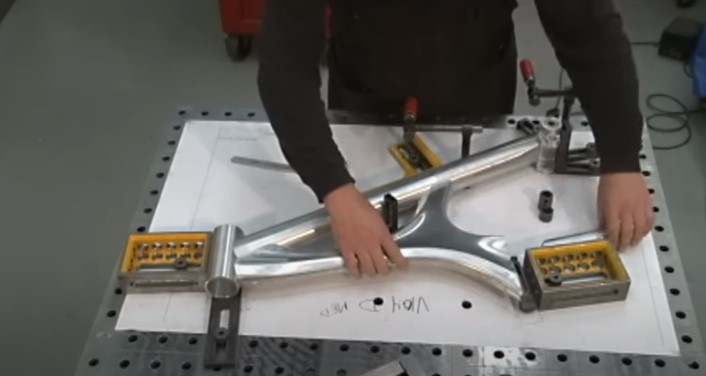
It is advisable to obtain quotes from multiple shops in the area to compare prices and find a balance between quality and affordability.
Additional Repairs and Services
In some cases, welding a cracked bike frame may reveal other issues or damage that need attention. For example, after welding, the frame might require sanding, painting, or applying protective coatings to restore its appearance and protect against corrosion.
Additional repairs or services will add to the overall cost, so it’s essential to discuss and clarify the scope of work with the welder beforehand.
Type of Welding Process
The type of welding process used to repair the cracked bike frame can influence the cost. Common welding methods include TIG (Tungsten Inert Gas) welding, MIG (Metal Inert Gas) welding, and stick welding.
TIG welding is often preferred for delicate materials like aluminum or titanium, but it generally requires more skill and time, making it potentially more expensive. MIG and stick welding might be more affordable options for steel frames but might not be suitable for other materials.

Brand and Model of the Bike
The brand and model of the bike can indirectly impact the welding cost. Some high-end or rare bike models may have unique frame designs or materials that require specialized knowledge for repairs, which can result in higher welding expenses.
Additionally, proprietary frame designs may have limited availability of replacement parts, leading to a more intricate and costly repair process.
How to Weld a Cracked Frame?
Discovering a crack in your beloved bicycle frame can be disheartening, but welding can often provide a reliable and cost-effective solution. Welding a cracked bicycle frame requires proper preparation, the right tools, and skillful execution.
Below is the step-by-step process of welding a cracked bicycle frame, ensuring a safe and effective repair.
Safety First
Before attempting any welding, prioritize safety. Ensure you have proper protective gear, including welding gloves, a welding helmet with a darkened lens, and appropriate clothing to shield against sparks and UV radiation.

Work in a well-ventilated area to prevent inhalation of fumes and maintain a fire extinguisher nearby for emergencies.
Assess the Damage
Thoroughly inspect the cracked area of the bicycle frame. Evaluate the extent and nature of the damage. Assess whether the crack is on the surface or extends into the internal structure of the frame.
If the crack is extensive, or there are multiple cracks, consider seeking professional advice from an experienced welder or a bicycle repair specialist.
Gather the Right Equipment
To weld a cracked bicycle frame, you will need specific welding equipment. Depending on the material of the frame, choose the appropriate welding process.
Common welding methods for bicycle frames include TIG (Tungsten Inert Gas) welding for aluminum and titanium frames, MIG (Metal Inert Gas) welding for steel frames, and specialized techniques like carbon fiber repair for carbon frames.

Disassemble the Bike
To facilitate access to the cracked area, partially disassemble the bicycle. Remove the wheels, chains, pedals, and other components that obstruct your welding work.
Take pictures or make notes during the disassembly to ensure you can correctly reassemble the bike later.
Clean the Crack and Surrounding Area
Before welding, clean the cracked area and its vicinity thoroughly. Use a degreaser to remove any oil, grease, or contaminants that could interfere with the welding process.
If the frame has a paint or powder coat, strip it from the area around the crack to create a clean surface for welding.
Preheat (If Applicable)
For certain materials, preheating the area around the crack can be beneficial to prevent cracking and promote better weld penetration. However, this step is not necessary for all frames.
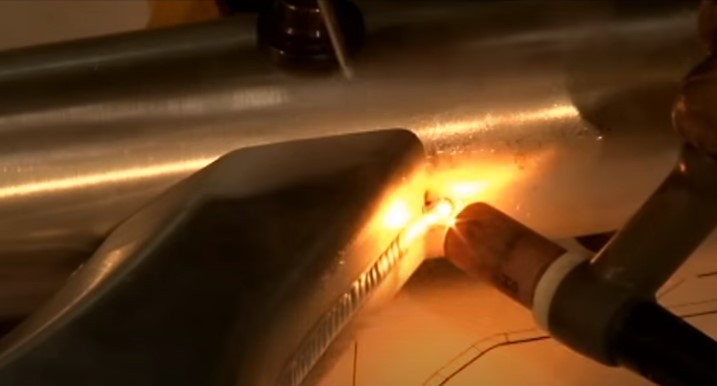
Consult welding guidelines specific to the material of your bicycle frame to determine if preheating is recommended.
Prepare the Welder
Set up your welding equipment according to the manufacturer’s guidelines and the welding process you are using. Ensure the appropriate welding wire or filler rod is selected based on the frame’s material.
Begin Welding
Start the welding process by creating a tack weld at one end of the crack. Gradually move along the crack, applying welds with consistent speed and distance to avoid overheating and warping the frame.
For TIG welding, use a foot pedal to control the heat input. For MIG welding, adjust the wire feed and voltage settings as needed.
Control the Heat
Controlling the heat during welding is crucial to prevent damaging the frame. Avoid prolonged welding in one spot, as excessive heat can weaken the metal or cause distortion. Allow the frame to cool between welds to maintain its structural integrity.

Fill the Crack
Ensure the weld penetrates the entire depth of the crack, effectively fusing the two sides. Depending on the size and depth of the crack, you may need to add multiple passes to fill the gap.
Post-Welding Inspection
After completing the welding process, inspect the welded area carefully. Check for any signs of incomplete fusion, porosity, or other welding defects. If you identify any issues, re-weld the affected areas as needed.
Cool the Frame Gradually
After welding is complete, allow the frame to cool down gradually. Avoid sudden temperature changes that could lead to stress and cracks.
Post-Welding Treatment
Depending on the frame’s material, you may need to conduct post-welding treatments. For instance, steel frames might require heat treatment to relieve stress, while aluminum [1] frames could benefit from a solution of heat treatment and the aging process.
Reassemble the Bike
Once the frame is thoroughly cooled and any necessary post-welding treatments are done, reassemble the bike. Ensure all components are correctly placed and tightened according to the manufacturer’s specifications.
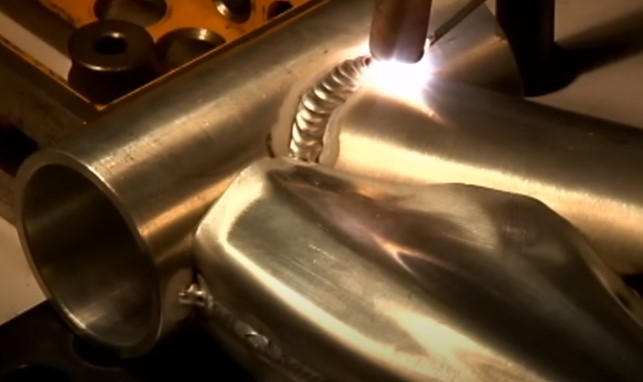
Perform a Test Ride and Inspection
Before embarking on longer rides, take the bike for a short test ride to assess its performance and check for any abnormalities. Inspect the welded area again to ensure it remains secure and without any new cracks or issues.
Why You Should Not Buy a Cracked Bike?
When shopping for a used bike, it’s essential to carefully inspect the bicycle’s condition to ensure a safe and enjoyable ride. One red flag that should never be ignored is a cracked bike frame.
Purchasing a bike with a cracked frame can lead to numerous safety hazards and costly repairs, compromising both your cycling experience and your well-being.
Structural Integrity and Safety
A cracked bike frame compromises the structural integrity of the bicycle. The frame is the foundation that supports all other components, and any damage to it can lead to catastrophic failures.
Riding a bike with a cracked frame poses a significant safety risk, as the frame may fail unexpectedly during a ride, causing accidents and injuries.
Compounding Damage
Ignoring a cracked bike frame can exacerbate the problem. As you ride the bike, the crack is subjected to constant stress and strain, which can lead to the crack growing larger over time.
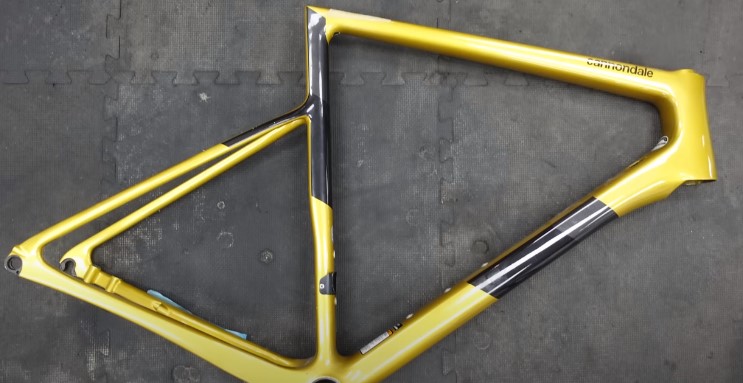
What may start as a minor crack can quickly escalate into a severe structural issue that affects other parts of the bike.
Limited Repair Options
Repairing a cracked bike frame is often complex and costly. Welding or repairing carbon fiber frames requires specialized skills and equipment, while certain materials may be impossible to repair.
In some cases, a cracked frame may be beyond repair, necessitating a complete replacement.
Reduced Performance and Ride Quality
A cracked frame can negatively impact the bike’s performance and ride quality. The bike may feel unstable, handle poorly, or produce unusual vibrations. These issues can significantly diminish the joy of cycling and lead to discomfort during rides.
Difficulty in Resale
If you decide to sell the bike later on, a cracked frame can significantly reduce its resale value. Prospective buyers will be hesitant to purchase a bike with a structural issue, and you may have to sell it at a significant loss or find it difficult to sell at all.
Potential Legal Issues
Riding a bike with a cracked frame may expose you to legal repercussions. If an accident occurs due to the cracked frame, you may be held liable for any injuries or damages caused to others.
Conclusion
The cost to weld a cracked bicycle frame varies based on factors like the extent of damage and frame material. Generally, it can range from $50 to $100, but consulting a professional is advised for accurate estimates.

